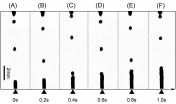(Press-News.org) Boston, MA – A retrospective study led by researchers at Brigham and Women's Hospital (BWH), has found an overuse of colonoscopies for colorectal cancer screening and surveillance. The study demonstrated that endoscopists commonly recommended shorter follow-up intervals than established guidelines support, and these recommendations were strongly correlated with subsequent colonoscopy overuse.
"Our study shows that a high percentage of follow-up colonoscopies are being performed too early, resulting in use of scarce health care resources with potentially limited clinical benefit," said Thomas D. Sequist MD, MPH, BWH Division of General Medicine and Primary Care, senior study author.
The study is published online September 30, 2014 in the Journal of General Internal Medicine.
In the retrospective cohort study, researchers combed electronic health record data of primary care patients at Harvard Vanguard Medical Associates, a multispecialty physician group practice in Massachusetts. The study included 1,429 patients 50 to 65 years old who underwent their first screening colonoscopy between 2001 and 2010; and underwent an additional 871 follow-up colonoscopies during a median follow-up of six years.
According to the researchers, 88 percent of follow-up screening colonoscopies and 49 percent of surveillance colonoscopies repeated during the study represented overuse—meaning they were performed more than one year early, and often times over three to four years earlier than is recommended by national guidelines. At the same time, one-quarter of study patients identified as higher risk based on initial colonoscopy findings failed to receive follow-up colonoscopy within the recommended three or five year time period.
Early colonoscopy was recommended by endoscopists following more than one-half of the initial colonoscopies. Colonoscopy overuse was strongly associated with these early follow-up recommendations by endoscopists; patients were up to 13 times more likely to undergo an early colonoscopy when their endoscopist recommended such follow up.
"Previous research has shown that most endoscopists do not consistently agree with the follow-up intervals recommended in national guidelines and report preferences for shorter screening and surveillance intervals," said Sequist. "Examining practice variation and establishing locally endorsed standards among endoscopists may be a way to target interventions to reduce overuse."
Added Sequist: "There are likely multiple drivers of recommendations for early colonoscopy, including disagreement with current guidelines, fear of poor patient outcomes or malpractice, or misaligned financial incentives."
"The overused colonoscopies on the patients in this study alone represent a potential excess of over $1 million in health care spending—resources that might benefit those who are overdue for colon cancer screening," said Gina Kruse, MD, Massachusetts General Hospital, lead study author.
Overuse of screening exams has become a focus of national efforts, such as the Choosing Wisely campaign by the American Board of Internal Medicine Foundation and the American Gastroenterological Association, which are jointly encouraging physicians to cut back on colorectal cancer screening exams of uncertain value.
INFORMATION:
This research was supported by the National Cancer Institute (R01 CA112367, 5R25 CA057711-20), Health Resources and Services Administration, and Ryoichi Sasakawa Fellowship Fund.
Brigham and Women's Hospital (BWH) is a 793-bed nonprofit teaching affiliate of Harvard Medical School and a founding member of Partners HealthCare. BWH has more than 3.5 million annual patient visits, is the largest birthing center in Massachusetts and employs nearly 15,000 people. The Brigham's medical preeminence dates back to 1832, and today that rich history in clinical care is coupled with its national leadership in patient care, quality improvement and patient safety initiatives, and its dedication to research, innovation, community engagement and educating and training the next generation of health care professionals. Through investigation and discovery conducted at its Brigham Research Institute (BRI), BWH is an international leader in basic, clinical and translational research on human diseases, more than 1,000 physician-investigators and renowned biomedical scientists and faculty supported by nearly $650 million in funding. For the last 25 years, BWH ranked second in research funding from the National Institutes of Health (NIH) among independent hospitals. BWH continually pushes the boundaries of medicine, including building on its legacy in transplantation by performing a partial face transplant in 2009 and the nation's first full face transplant in 2011. BWH is also home to major landmark epidemiologic population studies, including the Nurses' and Physicians' Health Studies and the Women's Health Initiative. For more information, resources and to follow us on social media, please visit BWH's online newsroom.
Endoscopists recommend frequent colonoscopies, leading to its overuse
2014-09-30
ELSE PRESS RELEASES FROM THIS DATE:
Chinese scientists unveil liquid phase 3-D printing method using low melting metal alloy ink
2014-09-30
Three-dimensional metal printing technology is an expanding field that has enormous potential applications in areas ranging from supporting structures, functional electronics to medical devices. Conventional 3D metal printing is generally restricted to metals with a high melting point, and the process is rather time consuming.
Now scientists at the Beijing Key Laboratory of CryoBiomedical Engineering, part of the Technical Institute of Physics and Chemistry at the Chinese Academy of Sciences, have developed a new conceptual 3D printing method with "ink" consisting of ...
First dark matter search results from Chinese underground lab hosting PandaX-I experiment
2014-09-30
Scientists across China and the United States collaborating on the PandaX search for dark matter from an underground lab in southwestern China report results from the first stage of the experiment in a new study published in the Beijing-based journal SCIENCE CHINA Physics, Mechanics & Astronomy.
PandaX is the first dark matter experiment in China that deploys more than one hundred kilograms of xenon as a detector; the project is designed to monitor potential collisions between xenon nucleons and weakly interactive massive particles, hypothesized candidates for dark matter.
In ...
New estimates on carbon emissions triggered by 300 years of cropland expansion in Northeast China
2014-09-30
The conversion of forests, grasslands, shrublands and wetlands to cropland over the course of three centuries profoundly changed the surface of the Earth and the carbon cycle of the terrestrial ecosystem in Northeast China.
In a new study published in the Beijing-based journal SCIENCE CHINA Earth Sciences, a team of researchers from Beijing Normal University, Nanjing University of Information Science & Technology, and the Institute of Geographic Sciences and Natural Resources Research of the Chinese Academy of Sciences, present new calculations on carbon emissions triggered ...
Alcohol makes smiles more 'contagious,' but only for men
2014-09-30
Consuming an alcoholic beverage may make men more responsive to the smiles of others in their social group, according to new research in Clinical Psychological Science, a journal of the Association for Psychological Science. The findings suggest that, for men, alcohol increases sensitivity to rewarding social behaviors like smiling, and may shed light on risk factors that contribute to problem drinking among men.
"This experimental alcohol study, which included a social context, finds the clearest evidence yet of greater alcohol reinforcement for men than women," says ...
Slim cigarette smokers not exposed to more harmful chemicals
2014-09-30
A new study confirms that the exposure to tar tended to be lower for smokers of slim cigarettes than of regular cigarettes. Similarly, exposure to nicotine tended to be lower.
Slim cigarettes are an increasingly popular type of cigarette in several countries around the world. Previous studies have shown that the levels of certain toxic chemicals in the smoke of these cigarettes are lower than those in regular cigarettes. However, because lower levels of chemicals in the smoke are not necessarily linked to a reduced exposure to harmful chemicals, concerns had been raised ...
Genomic data could help doctors know whether to prescribe statins
2014-09-30
Genomic data could predict whether statins will benefit a patient or not, according to an article in the open access journal Genome Biology. The research suggests that genomic data alone can explain around 15% of patients' responses to a cholesterol-lowering statin, and further studies could increase the accuracy of these predictions.
The study looked at data from 372 participants in an American clinical trial for the statin, Simvastatin, and found that certain genetic signatures were more common in patients whose cholesterol was effectively lowered by the treatment, ...
Half of global wildlife lost, says new WWF report
2014-09-30
Washington, DC – Monday, September 29: Between 1970 and 2010 populations of mammals, birds, reptiles, amphibians, and fish around the globe dropped 52 percent, says the 2014 Living Planet Report released today by World Wildlife Fund (WWF). This biodiversity loss occurs disproportionately in low-income countries—and correlates with the increasing resource use of high-income countries.
In addition to the precipitous decline in wildlife populations the report's data point to other warning signs about the overall health of the planet. The amount of carbon in our atmosphere ...
Association of physical activity with diabetes is weakest among women at high genetic risk
2014-09-30
New research published in Diabetologia (the journal of the European Association for the Study of Diabetes) suggests that the protective effect of physical activity against diabetes is weakest among those at high genetic risk. The research is by Dr Yann Klimentidis, an Assistant Professor at the University of Arizona Mel and Enid Zuckerman College of Public Health, in Tucson, AZ, USA, and colleagues.
It is well established that physical activity reduces type 2 diabetes risk. However, the extent of protection afforded by physical activity may differ according to genetic ...
Annals of Internal Medicine tip sheet for Sept. 30, 2014
2014-09-30
Prop 46 Physician Drug Testing Mandate May Harm Patients it Aims to Protect
A new California ballot initiative being touted as a patient safety measure may create more problems than it solves, according to two new commentaries being published in Annals of Internal Medicine. Proposition 46, the Medical Malpractice Lawsuits Cap and Drug Testing of Doctors Initiative, would mandate random drug and alcohol testing of physicians and quadruple the cap on medical malpractice awards to $1.1 million. The authors argue that physician drug and alcohol testing should be unrelated ...
Landmark Medicare law had little impact on reducing chemotherapy cost
2014-09-30
WASHINGTON — Legislation passed in 2003 to slow the spiraling costs of drugs paid for by the federal government to treat Medicare patients has had no meaningful impact on cancer chemotherapy drug costs, say a team of researchers in the Journal of Clinical Oncology published online today.
"We looked at use of outpatient chemotherapy to treat colorectal and lung cancers, and did not find a substantial change in how oncologists prescribe those drugs following the implementation of the recent Medicare law in 2005," says the study's senior author, Arnold L. Potosky, PhD, a ...



